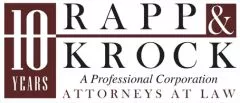One of the main benefits of forming a Texas entity (such as a Corporation, Limited Liability Company, or Limited Partnership), instead of operating a business as a sole proprietor or as general partnership, is that the owner of the entity is shielded from personal liability, in most cases. This means that if an entity is obligated to pay a debt to a third party, that third party cannot look to the owner to repay the debt out of the owner's personal assets, in most cases. This shield to personal liability is a strategy known as asset protection, where the owner's personal assets are separate from the businesses assets and are protected from the businesses' third-party claimants.
However, I emphasized the qualifier "in most cases" because the shield to personal liability that is created after forming an entity is not absolute; there are circumstances where an owner of a Texas entity can be personally liable for the entity's obligations. Below are examples of situations where owners of entities can subject themselves to personal liability, as well as ways for business owners to avoid these situations and to mitigate the risk of personal liability.
Contractual Liability
An owner of an entity may contractually agree to be personally responsible for the obligations of the entity. This is most commonly seen in personal guarantees with respect to financing transactions (such as obtaining a loan from a lender) and real property transactions (such as leasing a commercial building from a landlord).
In these situations, the owner agrees to guarantee the obligation of the entity in the event the entity fails to comply with its obligation, which is typically used as additional "collateral" or "security" for the lender, landlord, or applicable third party.
Personal guarantees can be negotiated though, if the third party requires one. You can set a maximum amount of liability for the owner, a period of time where the personal guarantee "burns off" and terminates, or include other individuals in the personal guarantee and have their liability "several but not joint" (meaning the third party can only go after the guarantors in a certain proportion and not for the full amount of the obligation). There are a lot of options to consider if a business owner is required to sign a personal guarantee, or contractually agree to take on other liabilities for its entity, and knowing what these options are will help a business owner in the negotiations of these important agreements.
Forfeiting the Corporate Charter
After forming an entity by filing the applicable certificate of formation with the Texas Secretary of State, Texas entities require periodic maintenance in order to keep them in "good standing". This maintenance comes in the form of tax obligations and files, such as the annual Franchise Tax Return and annual Periodic Information Report, both of which are required to be filed with the Texas Comptroller in May of each year. But other events qualify as failing to maintain an entity, which includes an entity failing to maintain a Registered Agent (which usually occurs when the Registered Agent resigns and the entity fails to appoint a successor).
In the event the entity is not properly being maintained, the entity can be "forfeited", and the Secretary of State of Texas will involuntarily terminate the entity's charter, meaning the corporate existence of the entity goes away. During the time that the entity's corporate charter is forfeited, the owner can be subject to personal liability, unless the owner reinstates the entity. It is important for business owners (or a trusted advisor) to periodically check the entity's status with the Texas Comptroller and Texas Secretary of State to confirm the entity is in good standing because notices from the State of delinquent maintenance actions or intent to forfeit can sometimes be sent to prior addresses so a business owner may not know that its entity has been forfeited.
Piercing the Corporate Veil
Even when a business owner does not contractually agree to take on liability for its entity, and even while an entity remains in good standing with the State, third party claimants can still levy against a business owner's personal assets in certain circumstances, including when such third party claimant is able to "pierce the corporate veil". This term refers to situations when the asset protection awarded to business owners when they create an entity is "pierced" by a claimant and thus subjecting the business owner to personal liability.
In order for a claimant to succeed on its veil-piercing claim against a business owner, the claimant must meet the requirements set forth in Section 21.223(b) of the Business Organizations Code, which requires evidence that the business owner "caused the [entity] to be used for the purpose of perpetrating and did perpetrate an actual fraud on the [claimant] primarily for the direct personal benefit of the [business owner]."
While this is a high standard for a claimant to meet, courts generally consider other equitable factors when making their determination. With that in mind, business owners should do all they can to avoid situations involving both the veil-piercing statute as well as implementing and maintain the following to ensure that the entity is separate and distinct from the business owner:
- Have a complete set of corporate records for the entity, including an operating agreement, minutes of meetings, ownership certificates, ownership ledger, trade names, employer identification number, and other governing documents.
- Appoint the business owner (or other trusted individuals) as managers/directors and officers of the entity to perform the day-to-day operations.
- Execute business contracts in the name of the entity and have the business owner sign the contracts as an officer or agent for the entity.
- Keep the business owner's personal bank account separate from the entity's bank account.
- Purchase or lease business assets in the name for the entity and not in the name of the business owner.
- Charge only business-related expenses to the entity's credit card or checking account.
- Ensure there is enough capital in the entity to cover its anticipated debts and expenses
- Document related-party transactions such as a loan from the business owner to the entity.
It may seem daunting to continuously comply with these restrictions to maintain your corporate existence, but the benefits of shielding your personal assets greatly outweigh the administrative cost of compliance. Surrounding yourself with experienced professionals can help shift this burden to and will ensure continued compliance and continued protection against personal liability.
The content of this article is intended to provide a general guide to the subject matter. Specialist advice should be sought about your specific circumstances.


